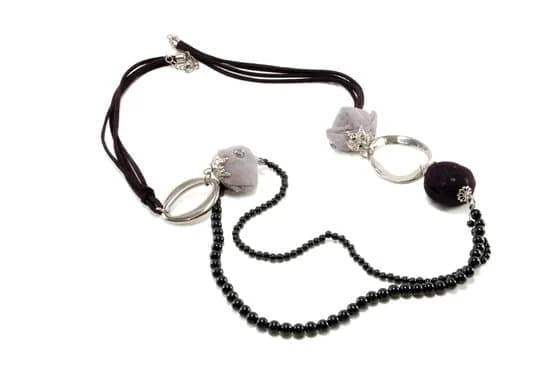Introduction
When it comes to choosing jewelry, people want something that is not only beautiful but also durable. Titanium is the perfect choice for those who want a precious metal that is strong and long-lasting. Unlike other metals, titanium jewelry will not corrode, rust or tarnish and has superior strength, making it ideal for everyday wear. The lightweight nature of the metal makes it comfortable to wear while its versatile appearance makes it suitable for almost any occasion. Additionally, titanium is hypoallergenic so it’s an excellent choice for individuals with sensitive skin.
However, before purchasing a piece of titanium jewelry it’s important to understand how to properly test it in order to ensure its authenticity and quality. Testing titanium jewelry requires proper knowledge of the characteristics of the metal in order to determine if a piece is genuine or not. By testing titanium jewelry and understanding what you are looking for, you can feel confident knowing that your purchase will last.
Overview of Testing Methods
Testing methods for titanium jewelry vary depending on the grade of material being evaluated. Grade evaluations are based on testing for measurable physical characteristics, such as consistent dimensions or color tones. Additionally, status symbols or markings may be used to differentiate between grades of titanium jewelry if applicable.
Further chemical analysis may be used to determine the chemical composition of titanium material and ensure its purity. Common tests that can be conducted include spectrography to detect which elements are present and X-ray diffraction to measure the structural integrity of crystalline elements in the material. These tests help evaluate the original structure and construction of materials used in jewelry making. Additionally, hardness and strength tests are commonly used to test how well a piece of titanium jewelry will perform under stress such as during wear and tear.
Assessing the Quality of Titanium Jewelry
1. Is the jewelry a consistent color throughout or does it have variations and blemishes?
2. Does the metal feel smooth and free of sharp edges and burrs?
3. Does the surface have any scratches or marks from wear and tear?
4. Have any stones, gems, or engravings been properly secured to the metal?
5. Are hinges and clasps on bracelets, necklaces, rings and other items securely fastened?
6. Is the clasp easy to open and close when used with one hand?
7. Are all textures on chain links uniform in size and shape?
8. Is the titanium stamped with a logo or mark that indicates its authenticity as pure titanium jewelry?
Testing Against Counterfeits
Genuine titanium jewelry will display several key characteristics to distinguish it from counterfeit pieces. These include characteristics such as marking – genuine pieces will be hallmarked for quality assurance, and the material should be clearly labeled, such as having the word “Titanium” or a logo stamped into the piece. The alloy used should also be listed – usually Grade 22 Ti or Grade 23 Ti. Authentic pieces may have a slight electrical charge when touched due to the high levels of conductivity, while fakes typically do not. Genuine pieces may also have grainy bands in their surface as a result of a forming process (Refined Titanium) while counterfeit pieces typically have solid color surfaces with no bands present.
Obtaining Professional Help to Test
Testing titanium jewellery can be done by professional or retail services. Professional services include Certified Gemologists and experienced jewellers who have access to high-grade laboratory equipment used to analyze gems and metals. Retail services, such as Canada’sDiamonds and Gemopolis USA, provide a variety of tests for identifying various metals like titanium. Tests such as hardening agents, rare-earth magnetism and acid dipping can help determine if an item is indeed titanium. There are also websites that offer hardness testing kits with step-by-step instructions on how to conduct at-home tests of your titanium jewellery. Other companies, such asX-Ray Spectrometry Labs, offer highly accurate spectrometry analysis performed in specialized laboratories. This type of test is often recommended when dealing with higher quality or customized pieces since it can detect small variations in the chemical composition of ceramic, gold and platinum alloyed together with titanium.
Conclusion
Testing titanium jewelry can help you make sure that your piece is genuine, without risk of damage to it. Titanium jewelry is extremely durable, so it’s important to use the correct testing method in order to benefit from this strength and resiliency. With the right method, customers have the assurance that their piece is genuine and well-protected against wear and tear.
We recommend using the tried and tested sander method for testing titanium jewelry, due to its effectiveness and low cost of materials. Sanding a titanium piece reveals its distinctive gray patches if it is genuine while fake ti pieces will feature a silver or brown color. We suggest that you exercise caution when sanding large pieces as there might be danger of them cracking or shattering under intense pressure.
In conclusion, testing titanium jewelry has many advantages; it helps customers gain reassurance in their purchase, enables them to identify genuine pieces and safeguards against damage caused by their efforts. As such, we strongly urge our customers to always make use of the sander method to safely test their titanium jewelry before using other methods.

Welcome to my jewelry blog! My name is Sarah and I am the owner of this blog.
I love making jewelry and sharing my creations with others.
So whether you’re someone who loves wearing jewelry yourself or simply enjoys learning about it, be sure to check out my blog for insightful posts on everything related to this exciting topic!





